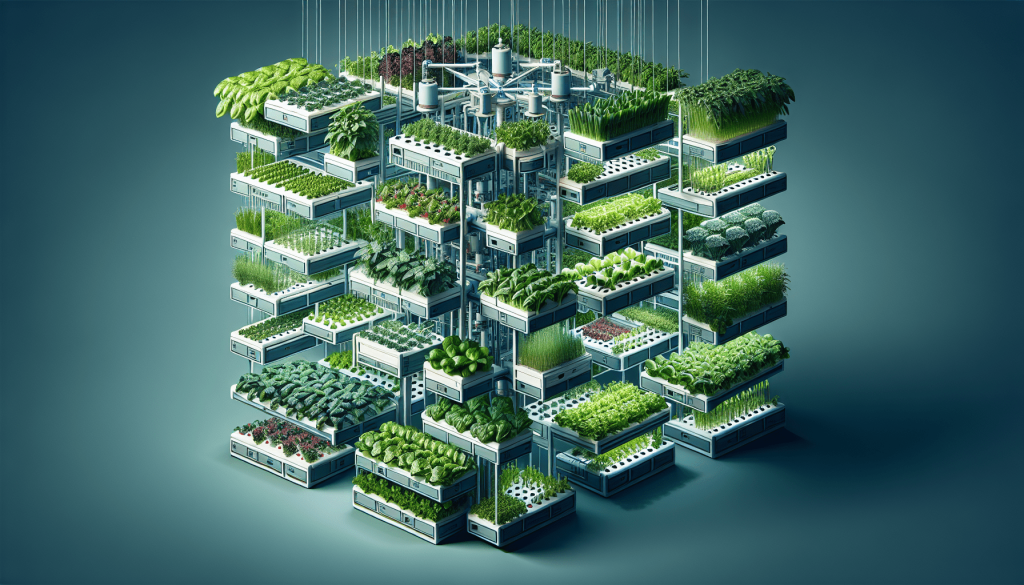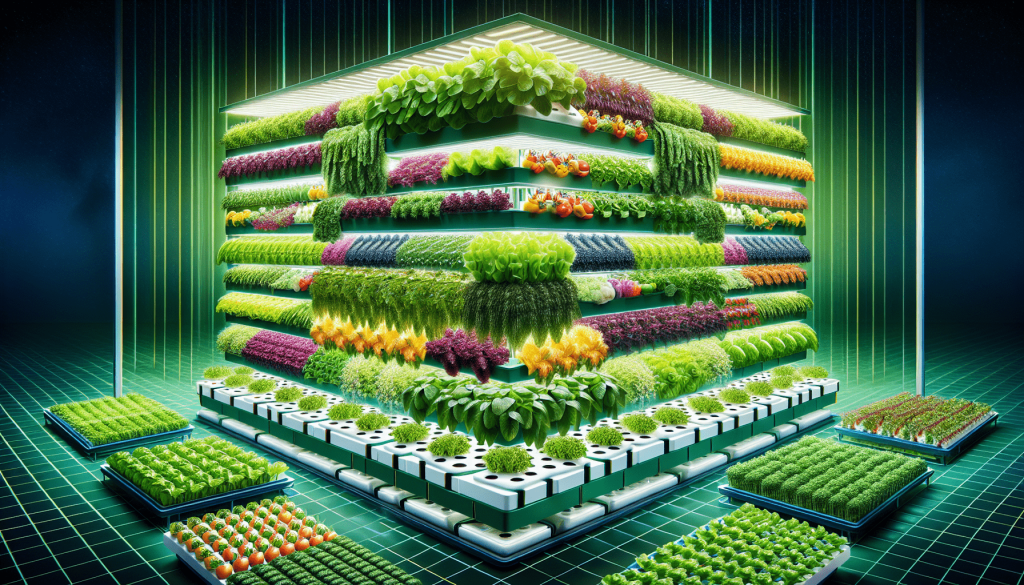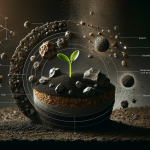This post may contain affiliate links. As an Amazon Associate, we may earn commissions from qualifying purchases.
Have you ever wondered what the future of farming might look like as urban spaces continue to expand and traditional agricultural lands shrink? It’s a fascinating question, considering we need to feed a growing population while minimizing environmental impact. One intriguing solution cropping up in cities worldwide is the integration of vertical farming with hydroponics. These innovative techniques could revolutionize how you think about food production.
Understanding Vertical Farming
Let’s break it down. Vertical farming is a method where crops are grown in vertically stacked layers, often using controlled environments to optimize plant growth. Imagine a skyscraper filled with shelves of fresh lettuce and tomatoes instead of office desks and meeting rooms. The goal is to use less land while increasing yield, making farming possible in places where soil-based agriculture isn’t feasible, like urban roofs or abandoned warehouses.
The Principles Behind Vertical Farming
Vertical farming operates on the principle of stacking plant beds vertically rather than spreading them horizontally across large tracts of land. By controlling factors like light, humidity, and temperature, farms can successfully grow crops in environments that mimic ideal outdoor conditions, regardless of season or weather.
Think about how beneficial this could be. In cities where space is tight, vertical farming fits snugly into urban landscapes without requiring vast expanses of soil. It’s like building an apartment complex in your neighborhood but instead of families, it’s housing for plants.
Introduction to Hydroponics
Now let’s chat about hydroponics, another fascinating piece of this agricultural puzzle. Hydroponics refers to the method of growing plants without soil, using nutrient-rich water solutions. This approach allows plants to grow faster and utilize less water compared to traditional methods because they get exactly what they need without needing to reach for it in the soil.
How Does Hydroponics Work?
Imagine you’re dining at a fancy buffet loaded with nutritious options. Hydroponic plants experience something similar since their roots are submerged in nutrient solutions, always receiving the perfect balance of elements necessary for growth. They don’t waste energy extending roots through the soil in search of nutrients, allowing more energy to be devoted to growth and fruit production.

Uniting Vertical Farming with Hydroponics
What happens when you combine the space efficiency of vertical farming with the resourcefulness of hydroponics? The result is a smart system that maximizes every square meter, saving water and reducing the carbon footprint. It’s a relationship where the whole is greater than the sum of its parts.
Space Efficiency and Urban Farming
Consider the limited space in urban areas. Vertical farming with hydroponics allows you to convert underused urban areas into productive agricultural spaces. By stacking layers, these systems can yield a significant amount of produce on a small footprint. An old warehouse in a city center could become a farm producing thousands of heads of lettuce per month!
Environmental Benefits
Let’s dwell on the environmental aspect for a moment. Traditional farming can be harsh on the environment, with high water usage, soil erosion, and chemical runoff. The integration of vertical farming and hydroponics drastically reduces these impacts. Water use is minimized because it’s recycled within the system, and soil erosion becomes a non-issue since slabs of concrete aren’t prone to erosion. Plus, without the need for pesticides commonly used in traditional soil farming, you’re doing a favor to the surrounding ecology.
Economic Advantages
Sure, these technologies sound great for the environment, but what about your wallet? Integrating vertical farming with hydroponics has economic incentives too.
Increased Yields
For starters, yield could increase significantly. This efficiency means more produce can be grown per square foot compared to traditional methods. A higher yield could lead to reduced costs of produce, making it more accessible to everyone.
Reduced Transportation Costs
Imagine a farm smack in the middle of the city. Transporting fresh produce grown there to urban markets is quick and less costly than shipping from rural farms. This proximity means fresher produce for consumers and fewer emissions from transportation.

Boosting Food Security
Consider this – with climate change affecting weather patterns, traditional farming can be risky. Droughts, floods, and unpredictable temperatures can wreak havoc on crops. Vertical farming with hydroponics can alleviate these issues by providing stable growing environments regardless of external climate conditions.
Resilience Against Climate Change
Hydroponic systems in vertical setups aren’t reliant on weather conditions. This makes them ideal for cultivating food amidst climate uncertainty, maintaining food supply stability even when external conditions raise havoc on traditional farms.
Sustainability and Reduced Waste
Now, let’s shift our gaze to sustainability. One of the compelling reasons to consider this method is the potential for reducing waste across the farming process.
Water Conservation
Water is a precious resource, and hydroponically-integrated vertical farms excel in conservation. These systems can use up to 90% less water than traditional farming methods. Water is constantly recycled within the systems; hence it requires minimal additional inputs over time.
Waste Reduction
Think about all the plant waste — leaves, roots, etc. In traditional farming, much of this ends up as waste, but vertical farms have systems to compost these byproducts efficiently. Moreover, due to precise nutrient delivery, hydroponics reduces the chance of nutrient runoff contaminating local water supplies, leading to healthier ecosystems.
Promoting Local and Organic Production
Isn’t it appealing to support local agriculture, knowing exactly where your food comes from? Vertical farming with hydroponics encourages local production, reducing reliance on imported goods which are not only costly but also environmentally taxing due to transportation.
Organic Potential
With controlled environments and reduced pests, there is less need for harmful pesticides in these systems. This makes it easier to produce organic vegetables, which can be healthier for you and better for the planet.
Limitations and Considerations
Before you imagine grapes growing on high-rise balconies, there are some limitations to consider. While the integration is promising, it’s not without its challenges.
High Initial Costs
Setting up a vertical farm with hydroponics can be pricey due to technology and infrastructure needs. However, these costs might be viewed as investments considering long-term savings and benefits.
Energy Consumption
There is also the energy factor. Maintaining a controlled environment requires significant energy, primarily for lighting and temperature regulation. Innovations like solar power integration are being explored to offset this dependency on traditional energy sources.
The Future of Urban Agriculture
Envision a future where every urban neighborhood has its mini-farm providing fresh, healthy produce year-round. This vision is closer to reality, thanks to the integration of vertical farming with hydroponics.
Technological Innovations
Continuous advancements in agriculture tech, such as artificial intelligence and improved LED grow lights, mean more efficient systems. These innovations aim to further reduce costs and environmental impact.
Community and Educational Benefits
Picture these vertical farms not only as food sources but as educational centers, teaching city dwellers about sustainability and food production. They’re hubs of knowledge, fostering a greater communal understanding and appreciation of where food comes from.
Conclusion
At its heart, integrating vertical farming with hydroponics offers a hopeful glimpse into the future of sustainable food production. It maximizes urban space, supports environmental conservation, boosts food security, and promotes local economies. While challenges like cost and energy consumption exist, the potential benefits make it a compelling consideration for the future of agriculture.
As urban landscapes evolve, envision a future where innovative, eco-friendly methods meet our food needs, enriching communities and the planet. It might seem futuristic, but these systems are nearing mainstream reality, propelling us towards a sustainable path for future generations.








